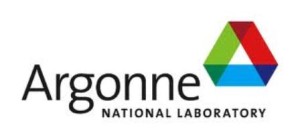“Overview of HQ Lithium Rechargable Batteries: Challenges and Opportunities”
Karim Zaghib obtained his MS in 1987 and his PhD in 1990, both in electrochemistry from the Institut National Polytechnique de Grenoble, France under the direction of Prof. Bernadette Nguyen. In 2002, he received the HDR (Habilitation à Diriger la Recherche) in materials science from the Université de Pierre et Marie Curie, Paris, France.
From 1986 to 1990, Dr. Zaghib developed Al-Mn alloys in molten salt (ionic liquid) as negative electrodes for Li-ion batteries and also investigated the Cu and Zn displacement reactions. In 1990, Dr Zaghib published a new method to enhance the electrodeposition of metals (electrolysis aided cementation) in Electrochimica Acta. In 1990-1992, he was a post-doctoral fellow under a Saft – DGA contract working on chemical and electrochemical passivation of natural graphite and carbon fibers for Li-ion batteries.
From 1992 to 1995, Dr. Zaghib was guest researcher for the Japanese Ministry of International Trade and Industry (METI) where he joined the New Sunshine project at ONRI (Osaka, National Research Institute) to develop new materials for lithium-ion batteries. He developed VGCF (Vapor Grown Carbon Fibers) in collaboration with Nikisso company as a negative electrode, and identified additives and solid polymer and gel electrolytes for Li-ion batteries with DKS, Japan.
Following his research in Japan, Dr Zaghib joined Hydro-Quebec’s ACEP project where he was instrumental in introducing Li-ion technology to the company. Dr. Zaghib is currently Administrateur of the CSE (Conversion and Storage of Energy Department) Group at the Institute de research d’Hydro-Québec in Varennes, Quebec, Canada. At Hydro-Quebec, he started collaboration with Dr. Michel Armand on new materials and electrolyte. Dr. Zaghib has published numerous papers in the Journal of the Electrochemical Society on a variety of research topics, including new solid Li-ion batteries based on SiO, nanoLi4Ti5O12 (LTO) and expanded metal with solid polymer or gel electrolyte in combination with 3V and 4V cathode materials and LTO. His collaboration with Dr. Armand led to the development of the hybrid super capacitor using LTO negative and carbon positive electrodes.
In 1998, Dr. Zaghib start a collaboration with Dr. Kim Kinoshita at LBNL to understand the oxidation and irreversible capacity loss versus the particle size of natural graphite by proposing several models to consider the role of the site and basal plane sites. This study was helpful to make spherical natural graphite particles and the development of low cost and environmental technique for the purification of natural graphite. The investigation of heat treatment of mesocarbon microbeads (MCMB) and carbon fibers from 700 to 2800°C was beneficial to compare the performance and role of carbon particles and fibers for Li-ion technologies. During the last 15 years, Dr. Zaghib has actively collaborated with Prof. John Goodenough (University of Texas, Austin), Dr. Christian Julien and Dr. Alain Mauger (Paris 6 University, France) to develop the olivine and silicate cathode materials for Li-ion batteries. A major focus of this collaboration is to develop nanostructured materials for energy storage and conversion.
Dr. Zaghib has published 240 refereed papers and 164 patents and served as editor or co-editor of 13 books. He was organiser or co-organiser of 41 symposiums, meetings, workshops. In June 2010, he will be the General Chairman for the International Meeting on Lithium Batteries (IMLB) in Montreal, Quebec. He is very active in the Electrochemical Society, and recently completed his term as the Chairman of the Energy Technology Division. Dr. Zaghib is the recipient of the International Electric Research Exchange (IERE) Research Award (2008) in Iguaçu, Brazil, the International Battery Association (IBA) Research Award in January 2010 and Electrochemical Society Energy Division Research award, April 2010. In 2011, Dr. Zaghib has been elected as ECS Fellow.









